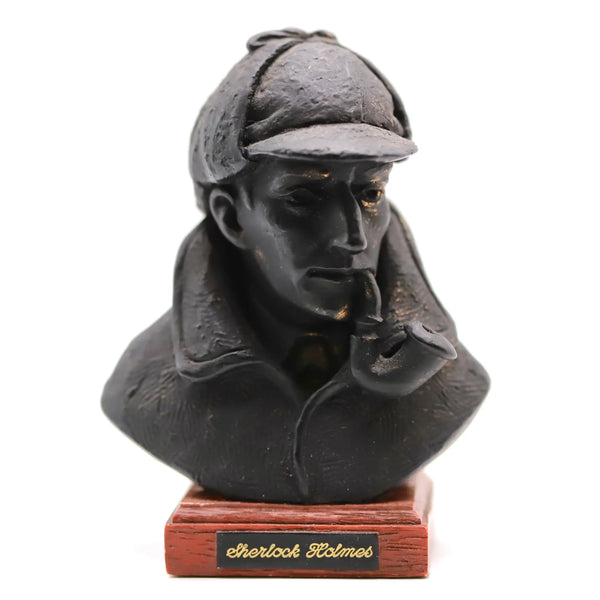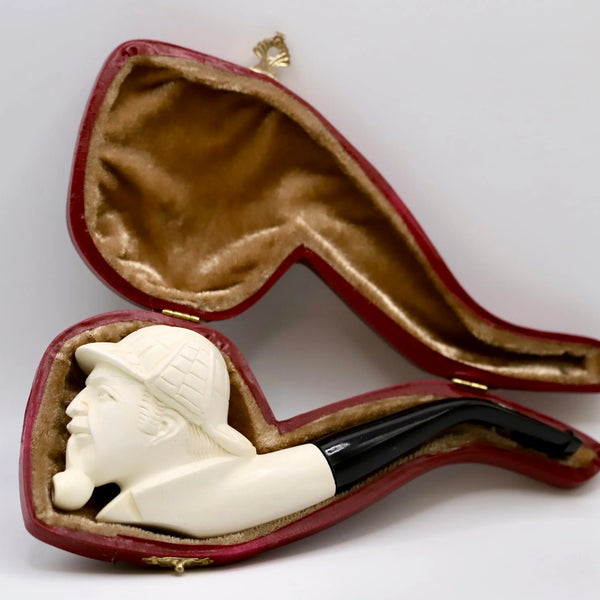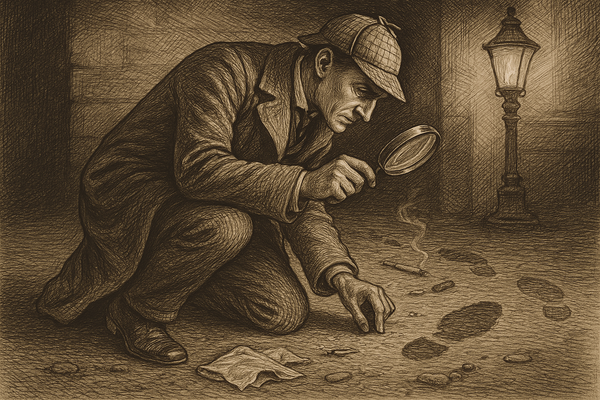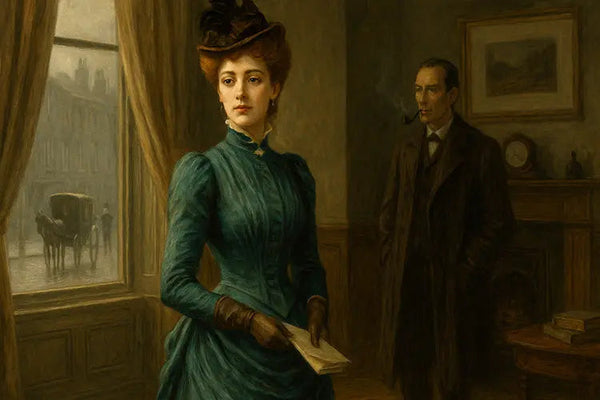Few literary characters have captivated readers’ imaginations across generations quite like the character Sherlock Holmes, the brilliant consulting detective who resided at 221B Baker Street. With his razor-sharp deductive reasoning, unparalleled observational skills, and encyclopaedic knowledge, this character revolutionised detective fiction and established a legacy that continues to influence popular culture well over a century after his debut.
The Genesis of a Detective: Arthur Conan Doyle
Arthur Conan Doyle, a Scottish writer and physician, created the iconic detective while struggling to establish his medical practice in Southsea. Born in Edinburgh in 1859, Doyle’s medical training profoundly influenced his writing. During his studies at the University of Edinburgh, Doyle encountered the remarkable Dr Joseph Bell, a surgeon whose diagnostic brilliance would become the primary inspiration for his fictional sleuth.
Conan Doyle's extensive body of work includes 62 Sherlock Holmes stories written between 1887 and 1927, comprising both novels and short stories.
Bell’s extraordinary ability to deduce patients’ occupations, habits, and medical histories through careful observation left an indelible impression on the young medical student. Years later, Doyle acknowledged, “It is most certainly to you that I owe Sherlock Holmes… I thought of you when I tried to express my ideal detective.”
The Birth of a Literary Legend
The character made his first appearance in “A Study in Scarlet,” published in Beeton’s Christmas Annual in 1887. This novel introduced not only the detective but also his loyal companion and chronicler, Dr John Watson, a retired army surgeon freshly returned from service in Afghanistan.
In several stories, Dr Watson's surgery plays a crucial role, as he often treats characters who have encountered injuries related to the mysteries.
Their meeting unfolds when Watson seeks affordable accommodation and is introduced to a peculiar potential flatmate at St. Bartholomew’s Hospital. The two agree to share lodgings at Baker Street, beginning one of literature’s most celebrated partnerships. Through Watson’s perspective, readers experience the detective’s brilliance, eccentricities, and methods.
Despite the detective’s remarkable debut, “A Study in Scarlet” initially received modest attention. The second novel, “The Sign of Four,” published in 1890, similarly failed to achieve immediate commercial success. However, the character’s fortunes—and Doyle’s—would soon change dramatically.
The Strand and Skyrocketing Fame of Sherlock Holmes Stories
In 1891, Doyle began writing short stories featuring his detective for The Strand Magazine. The first, “A Scandal in Bohemia,” introduced readers to Irene Adler, perhaps the only woman to intellectually challenge the detective and earn his profound respect. As Doyle wrote more stories, the detective’s popularity surged, transforming him into a literary sensation.
Six initial stories were compiled into the short story collection “The Adventures of Sherlock Holmes,” published in 1892. Illustrated by Sidney Paget, whose depictions—including the now-iconic deerstalker hat and Inverness cape—significantly shaped public perception of the character, this collection cemented the detective’s status as a cultural phenomenon.
The Adventures included several memorable cases:
-
“The Red-Headed League,” involving an elaborate bank robbery scheme
-
“The Five Orange Pips,” featuring the infamous American secret society
-
“The Blue Carbuncle,” a Christmas tale centred on a stolen gem found in a goose
-
“The Speckled Band,” often cited as one of the finest detective stories ever written
-
“The Beryl Coronet,” concerning the theft of a valuable royal diadem
These stories showcased the detective’s exceptional analytical abilities, eclectic knowledge, and distinct personality traits—including his violin playing, cocaine use during periods of inactivity, and frequent disguises.
Death at Reichenbach and Resurrection
As the detective's popularity grew, Doyle increasingly felt constrained by his creation, wishing to devote more time to historical novels and other literary pursuits. In "The Final Problem" (1893), Doyle attempted to kill his character in a dramatic confrontation with Professor James Moriarty at the Reichenbach Falls in Switzerland.
Public outcry was immediate and intense. The Strand reportedly lost 20,000 subscribers. Readers wore black armbands in mourning. After nearly a decade of resistance, Doyle relented and revived his character in "The Hound of the Baskervilles" (1901-1902), initially set before the fatal encounter at Reichenbach.
In 1903, Doyle fully resurrected his detective in "The Empty House," explaining that he had faked his death to evade Moriarty's associates. This marked the beginning of a new series published as "The Return of Sherlock Holmes" (1905).
The Method and the Man
What distinguished this fictional detective from countless literary predecessors was his scientific approach to crime-solving. He employed deductive reasoning (though technically, many of his conclusions relied on induction) to construct logical chains from observable evidence. “When you have eliminated the impossible, whatever remains, however improbable, must be the truth,” he famously explained.
His knowledge was specialised and practical. As Watson noted in “A Study in Scarlet,” his understanding of chemistry was profound, his anatomy knowledge spotty but precise, his legal knowledge practical but limited, and his literature knowledge negligible except for sensational fiction. He possessed comprehensive knowledge of crime history and demonstrated proficiency in boxing, swordsmanship, and various forms of disguise.
Beyond his intellectual capabilities, the detective exhibited a complex personality. He could be cold, aloof, and disdainful of emotion, yet showed compassion and occasionally bent rules for justice. His relationship with Watson evolved from professional admiration to deep friendship, with the doctor serving as his moral compass and connection to humanity.
Later Collections and Final Bow
Following “The Return,” Doyle continued to produce stories, collected in “His Last Bow” (1917) and “The Case-Book of Sherlock Holmes” (1927). These later tales, while often considered somewhat inferior to earlier works, nonetheless contained memorable cases and further developed the detective’s character.
Watson's point of view often provides a grounded, emotional counterbalance to Holmes's cold logic, enriching the narrative and deepening their partnership.
“His Last Bow,” set in 1914, depicts the detective emerging from retirement to assist British intelligence against German spies on the eve of World War I. His final words to Watson in this story serve as a poignant epilogue to their adventures: “There’s an east wind coming, Watson… such a wind as never blew on England yet. It will be cold and bitter… and a good many of us may wither before its blast. But it’s God’s own wind nonetheless, and a cleaner, better, stronger land will lie in the sunshine when the storm has cleared.”
The Complete Canon
In total, Conan Doyle's contributions to the Sherlock Holmes legacy include four novels and 58 short stories, published between 1887 and 1927. These are collectively known as “the Canon” among enthusiasts and scholars. The complete works include:
-
Novels: “A Study in Scarlet” (1887), “The Sign of Four” (1890), “The Hound of the Baskervilles” (1901-1902), and “The Valley of Fear” (1914-1915)
-
Short story collections: “The Adventures of Sherlock Holmes” (1892), “The Memoirs of Sherlock Holmes” (1893), “The Return of Sherlock Holmes” (1905), “His Last Bow” (1917), and “The Case-Book of Sherlock Holmes” (1927)
Cultural Impact and Legacy
The detective's influence extends far beyond literature. He is arguably the most portrayed literary character in film and television history, with actors from Basil Rathbone and Jeremy Brett to Benedict Cumberbatch interpreting the role. His methods influenced the development of forensic science, and his address at Baker Street receives letters from people worldwide to this day.
Societies dedicated to studying the detective and his world flourish globally, most notably The Baker Street Irregulars, founded in 1934. Scholars continue to analyse the stories, producing a vast body of research nicknamed "The Great Game," which treats the detective as historical rather than fictional.
Frequently Asked Questions
Was Sherlock Holmes a real person?
No, Sherlock Holmes was a fictional character created by Arthur Conan Doyle, though inspired by real individuals, primarily Dr Joseph Bell.
Who outsmarted Sherlock Holmes?
Irene Adler is the most notable character to outwit Holmes. In "A Scandal in Bohemia," she correctly anticipates his scheme and escapes with compromising photographs, earning his admiration as "the woman."
Who wrote Sherlock Holmes?
Sir Arthur Conan Doyle, a Scottish physician and writer, created and wrote all the original Sherlock Holmes stories between 1887 and 1927.
Where to watch Sherlock?
Various adaptations are available on streaming platforms. The BBC's "Sherlock" starring Benedict Cumberbatch is often found on Netflix or iPlayer. The Granada Television series featuring Jeremy Brett is available on BritBox, while many films can be rented on Amazon Prime or similar services.
How many Sherlock Holmes books are there?
Arthur Conan Doyle wrote 4 novels and 58 short stories featuring Sherlock Holmes, totalling 62 original works. These were typically published individually then collected into volumes.
Who played Sherlock Holmes?
Numerous actors have portrayed Holmes, including Basil Rathbone, Jeremy Brett, Robert Downey Jr., Benedict Cumberbatch, and Jonny Lee Miller. The role has been interpreted over 250 times on screen, making it a Guinness World Record.
When was Sherlock Holmes written?
The first Sherlock Holmes story, "A Study in Scarlet," was written in 1886 and published in 1887. The last original story by Doyle, "The Adventure of Shoscombe Old Place," was published in 1927.
More than a century after his creation, the world's first consulting detective continues to captivate minds with his intellectual prowess, distinctive personality, and timeless adventures through the foggy streets of Victorian London. As long as there are mysteries to solve and readers who appreciate brilliant deduction, his stories will endure as masterpieces of detective fiction.
















































